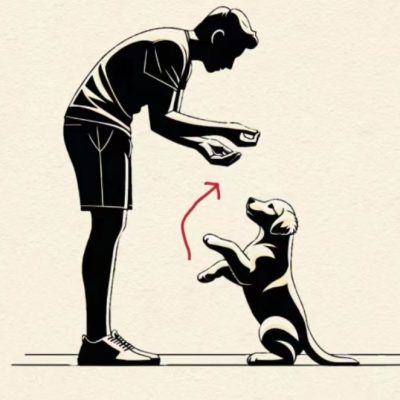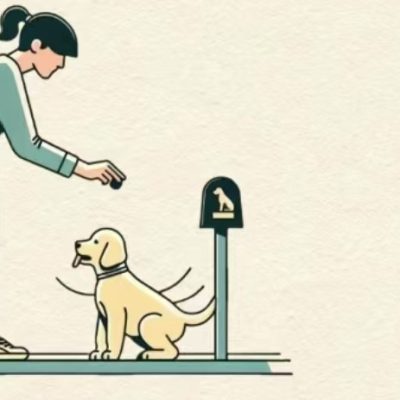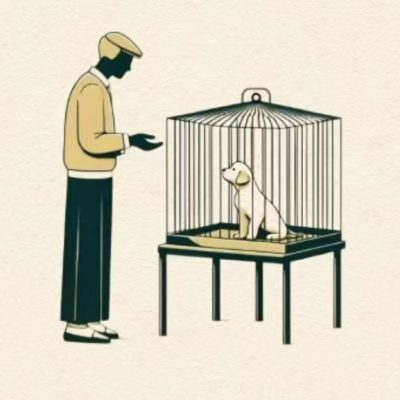



Basic Dog Training: Why Train Your Dog and the Basic Principles, Tools, and Guidelines for Dog Training
We bring dogs into human society, yet we fail to teach them how to follow human rules. Instead, when they break the rules, we punish, scold, or abandon them. This is irresponsible and unfair to the loyal dogs that accompany us.
Dog training is about communicating with dogs in a way they can understand, teaching them to follow some of the rules of human society, and training them to respond to commands, so we can live harmoniously together.
Bad habits in dogs can be prevented and corrected through training. A “bad habit” is any behavior that is unacceptable at any time by the owner or by other people around the dog.
Dogs primarily learn through the following three basic principles:
- Classical Conditioning (Pavlov)
- Operant Conditioning (Skinner’s reinforcement)
- Single-Event Learning
The basic tools for dog training include praise commands, correct action markers (e.g., clicker training), punishment commands, and reinforcement items.
Principles that owners should follow:
- Establish rules early
- Consistency in rules
- Ignore undesirable behavior and correct immediately
- Replace bad behavior with good behavior
- Stay calm
- Exercise, rules, affection
Cesar Millan, the famous dog trainer, often opens each episode of The Dog Whisperer with his advice: Exercise, Rules, Affection. First, make sure your dog gets enough physical exercise (walks, running, play, etc.), then ensure they follow the rules you set, and only after that should you offer affection.
Skill Training Principles:
- Use different reinforcement plans in stages
- Mark behaviors immediately
- Give a command only once
- Use hand gestures first, then verbal commands
Quality Education: Including House Etiquette, Socialization, and Bite Control Training
House Etiquette Training includes crate training, potty training, chewing habit training, and separation anxiety training.
Socialization Training includes two aspects: social ability training and contact/handling training.
Bite Control Training: After bite control training, dogs are able to control their bite strength, especially in situations that could lead to aggression. They understand how to control their bite force to avoid injuring humans and minimize harm.
This section highlights many training points and details worth reading carefully. Additionally, it’s important to note that dogs don’t have a “sense of morality.” Concepts like guilt, revenge, or intentional wrongdoing don’t exist for dogs. For them, the only difference is between safety and danger.
How to Become Your Dog’s Leader
- Biting the owner to protect resources
- Aggressive behavior due to insecurity
- Failing to return when called
- The right to distribute and prioritize food
- The right to exclusive access to food
- The right to monopolize mates
- Territorial rights and priority
- The right to be greeted upon reunion
- Lead the team in hunting
- Protect subordinates in dangerous situations
Add Your Heading Text Here
- Not coming when called
- Refusing to wear a leash
- Pulling ahead on walks
- Chewing objects
- Food guarding
- Scavenging food
- Begging for treats
- Stealing food from tables
- Picky eating
- Jumping on people when entering a room
- Barking excessively
- Aggression toward visitors
- Chasing cars
Other Behavioral Issues, Including Problems During Estrus and Fighting
Male dogs become passive during estrus, primarily responding to the scent of a female dog in heat. Female dogs generally go into heat twice a year, once in the spring and once in the fall. Estrus in female dogs consists of three phases: proestrus, estrus, and diestrus.
During the estrus phase, male dogs are particularly susceptible to fighting over mates. It’s best to keep a close eye on them and avoid encounters between male and female dogs during this period, or consider spaying/neutering.
Dog fights typically happen for the following reasons:
- Resource guarding (food, territory, toys, mates)
- Establishing dominance
- Lack of social manners
- Genetic predisposition (e.g., bulldogs, Tibetan mastiffs)
- Hunting instincts
- Mistakes by owners in communication
Dog fights can be categorized into three types:
- One-sided warning
- Mutual fighting, usually non-lethal but intense
- Predatory aggression, which can be fatal
Owners should be aware of the warning signs dogs give before fights escalate. If a fight does occur, owners should remain calm and quickly separate the dogs, but never physically intervene without caution.
Summary
Dog training is essential for fostering harmonious relationships between dogs and humans, helping dogs adapt to human society and follow rules. Training utilizes principles like classical and operant conditioning, with tools such as praise, clickers, and reinforcers. Key principles include establishing consistent rules, reinforcing good behavior, and staying calm. Owners must take on a leadership role to prevent behavioral issues, such as aggression or disobedience. Training involves house etiquette, socialization, bite control, and skill development through interactive games. Common issues like bad habits, fighting, and estrus behavior can be addressed with proper guidance and early intervention, ensuring dogs can live safely and happily with their owners.












